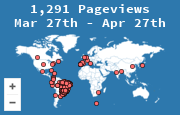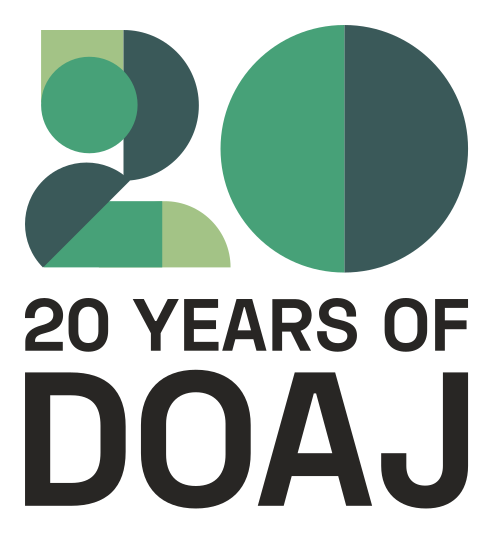Travel and Tourism
Emília Snethlage and Heloisa Alberto Torres the scientists and travelers of the 20th century Amazon
DOI:
https://doi.org/10.26512/revistacenario.v9i1.35032Keywords:
Viagens. Turismo. Viajantes. Turistas. AmazôniaAbstract
The trips in the Amazon region bring up many perspectives of research in different
areas of knowledge. Studies in history, mainly, show themselves as windows to the
notion of that space that has always taken over the Eurocentric imaginary. And
Tourism has also sought to expand investigations about the region, based on
theories of travel. Travelers and naturalists were the main characters who came and
landed here to write, paint and study the natural and human components of the
region. These male travelers comprised a majority. But, women were also present
here, exploring and researching the Amazon, specifically the State of Pará. Science
was one of the main pillars for the exploration of the Amazon to become part of the
experience of these and, perhaps, “first and first tourists ”. The objective of this
research is to present how two scientists, a German Emília Snethlage and a
Brazilian Heloísa Alberto Torres developed research in the Amazon of Pará and
from their studies point out a possible connection with the History of Tourism in the
region. These two scientists became important names in the natural and social
sciences, respectively, in Brazil and in the world. The theoretical approach of this
article is built on the History of Science and Tourism. Going through the study of
Gender, as the focus is two female scientists. The methodology supported in
History, where the sources in libraries such as Museu Paraense Emílio Goeldi, and
in websites of the National Digital Library and the collection of the National Archives
of Rio de Janeiro are the objects of analysis of the travels of these scientists.
Instruments used are travel reports, letters, newspaper clippings, publications in
which these researchers' incursions appear. Among the main results to date, the
travels of these women scientists included elements that today are understood as
tourist facilities, such as: lodging, transport, food, networks of guides. It is interesting
to note how these surveys come close to understanding how the region was
investigated by them. And even more so, their letters and reports show how these
trips, besides being scientific, envisioned the understanding of how History and
Tourism can come together as disciplines to understand how the tourist activity
developed in the Amazon region.
Downloads
References
ALBERTO, Diana P. Sá; PACHECO, Agenor Sarraf. Viagens Cientificas, Gênero e Turismo: análise da travessia de Emília Snethlage do Xingu ao Tapajós em 1909. ALVES, Kerley S. (Org.). Diálogos Sociais em Turismo: elementos hegemônicos e contra hegemônicos. Belo Horizonte: Editora Dialética, 2020, p. 265-280.
ALBERTO, Diana; SANJAD, Nelson. Emília Snethlage (1868-1929) e as razões para comemorar os 150 anos de nascimento. Bol. Mus. Para. Emílio Goeldi. Cienc. Hum., Belém, v. 14, n. 3, p. 1047-1070, 2019.
ASSUNÇÃO, Paulo de. História do Turismo no Brasil entre os séculos XVI e XX ”“ viagens, espaço e cultura. Barueri, SP: Manole, 2012.
BENI, Mario Carlos; MOESCH, Marutschka Martini. A teoria da complexidade e o ecossistema do turismo. Turismo - Visão e Ação, Balneário Camboriú, v. 19, n. 3, p. 430-457, 2017. Disponível em: < https://dx.doi.org/10.14210/rtva.v19n3.p430-457 > DOI: 10.14210/rtva.v19n3.p430-457.
BIBLIOTECA Digital Nacional. Acervo da Hemeroteca. Rio de Janeiro: Biblioteca Nacional, 2018-2019. (Digital (https://bndigital.bn.gov.br/).
BOURGUET, Marie-Noëlle. O Explorador. In: VOVELLE, M. (Dir.). O Homem do Iluminismo. Lisboa: Presença, 1997, p. 207-249.
BUTLER, Judith. Problemas de gênero: Feminismo e subversão da identidade. 15 ed. Rio de Janeiro: Civilização Brasileira, 2017. p 17-70.
CORRÊA, Mariza; MELLO, Januária (Orgs.). Querida Heloísa/ Dear Heloísa ”“ cartas de campo para Heloísa Alberto Torres. Núcleo de Estudos de Gênero ”“ PAGU. São Paulo: UNICAMP, 2008.
________. Dona Heloísa e a pesquisa de campo. Antropólogas & Antropologia. Belo Horizonte: Editora da UFMG, 2003.
CUNHA, Osvaldo Rodrigues da. Maria Elizabeth Emília Snethlage. In: CUNHA, O. R. Talento e Atitude: estudos biográficos do Museu Emílio Goeldi, 1, Belém: Museu Paraense Emílio Goeldi, 1989, p. 83-102.
DRITSAS, Lawrence. From Lake Nyassa to Philadelphia: a geography of the Zambesi Expedition, 1858-64. The British Journal for the History of Science, v. 38, n. 1, p. 35-52, 2005.
EWBANK, Cecilia de Oliveira. Antropólogos, curadores de museus e museografia durante a gestão de Heloísa Alberto Torres no Museu Nacional (1938-1955). Revista MUSAS, n. 8, p. 8-22, 2018.
FIGUEIREDO, Silvio L. Viagens & Viajantes. São Paulo: Annablume, 2010.
GINZBURG, Carlo. O queijo e os vermes ”“ o cotidiano e as ideias de moleiro perseguido pela Inquisição. São Paulo: Companhia das Letras, 2006.
GRAHAM, Maria. Diário de uma viagem ao Brasil ”“ E de uma estada nesse país durante parte dos anos de 1821, 1822 e 1823. São Paulo: Companhia Editorial Nacional, 1956.
HARDING, Sandra. A instabilidade das categorias analíticas na teoria feminista. Revista Feminista. n.1, p. 7-31, 1993.
JUNGHANS, Miriam. Among Birds and Net(Work)S: Material and Social Practices in the Trajectory of Ornithologist Emilie Snethlage (1868”“1929). HoST History of Science and Technology, v. 10, p. 71-101, 2016.
_______. Abrindo as gavetas: Emília Snethlage (1868-1929) e as coleções ornitológicas do Museu Goeldi e do Museu Nacional do Rio de Janeiro em 1922. In: LOPES, M. M.; HEIZER, A. (Orgs.). Colecionismos, práticas de campo e representações. Campina Grande: EdUEPB, 2011. p. 61-73.
LAFUENTE, Antonio; LÓPEZ-OCÓN, Leoncio. Tradiciones científicas y expediciones ilustradas en la América hispana del siglo XVIII. In: SALDAÑA, J. J. (Coord.). Historia social de las ciencias en América Latina. Cidade do México: UNAM/Miguel Ángel Porrua, 1996, p. 247-281.
LEITE, Miriam L. M. Viajantes naturalistas ”“ caracterização. In: LEITE, M. L. M. Livros de Viagem (1803-1900). Rio de Janeiro: UFRJ, 1997, p. 161-198.
LOPES, Maria Margaret. “Aventureiras” nas ciências: refletindo sobre gênero e história das ciências naturais no Brasil. Cadernos Pagu. n. 10, p. 345-368, 1998.
_______. O Brasil descobre a Pesquisa Científica: Os Museus e as Ciências Naturais no Século XIX. 2 ed. São Paulo: Editora Hucitec/Editora Unb, 2009.
MCCORMACK, Carey. Collection and Discovery: Indigenous Guides and Alfred Russel Wallace in Southeast Asia, 1854-1862. Journal of Indian Ocean World Studies, v. 1, p. 110-127, 2017.
MIGLIEVICH-RIBEIRO, Adélia. Heloisa Alberto Torres e Marina de Vasconcelos ”“ pioneiras na formação das ciências sociais no Rio de Janeiro. Rio de Janeiro: Editora da UFRJ, 2015.
MIGLIEVICH-RIBEIRO, Adélia. Revisitando o Museu Nacional e a História da Antropologia no Brasil pelas mãos de Heloísa Alberto Torres. Rev. Política & Sociedade, v. 18, n. 41, p. 27-59, 2019.
MOESCH, Marutschka Martini; BENI, Mário Carlos. Do discurso sobre a ciência do turismo para a ciência do turismo. Anais.. São Paulo: ANPTUR, 2015.Disponível em: < https://www.anptur.org.br/anais/anais/files/12/48.pdf>.
OLINTO, Gilda. A inclusão das mulheres nas carreiras de ciência e tecnologia no Brasil. Inc. Soc., Brasília, DF, v. 5 n. 1, p.68-77, jul./dez. 2011.
PANOSSO NETTO, Alexandre. Filosofia do Turismo ”“ Teoria e epistemologia. São Paulo: Aleph, 2005.
PINSKY, Carla B. (Org.). Fontes históricas. 2 ed. São Paulo: Contexto, 2008.
SANJAD, Nelson. A coruja de Minerva ”“ O Museu Paraense entre o Império e a República (1866-1907). Brasilia: Instituto Brasileiro de Museus; Belém: Museu Paraense Emílio Goeldi; Rio de Janeiro: Fundação Oswaldo Cruz, 2010.
________. et al. Emília Snethlage (1868-1929): um inédito relato de viagem ao rio Tocantins e o obituário de Emil-Heinrich Snethlage. Bol. Mus. Para. Emílio Goeldi. Cienc. Hum, Belém, v. 8, n. 1, p. 195-221, 2013.
SCOTT, Joan. Gênero: uma categoria útil de análise histórica. Educação & Realidade, Porto Alegre, v. 20, n. 2, p. 71-99, jul/dez, 1995.
SNETHLAGE, E.-Heinrich. Dr. Emilie Snethlage zum Gedächtnis. Journal für Ornithologie, v. 78, n. 1, p. 123-134, 1930. Tradução de João Batista Poça da Silva.
SNETHLAGE, Emília. Travessia entre o Xingu e o Tapajós. Boletim do Museu Goeldi, Belém, vol. XII, S. 49-92, 1912.
TRIGO, Luiz G. Godoi. A Viagem ”“ caminho e experiência. São Paulo: Aleph, 2013.
Downloads
Published
How to Cite
Issue
Section
License
Copyright (c) 2021 Cenário: Revista Interdisciplinar em Turismo e Território

This work is licensed under a Creative Commons Attribution-NonCommercial-NoDerivatives 4.0 International License.
1. Proposta de Política para Periódicos de Acesso Livre
Autores que publicam nesta revista concordam com os seguintes termos:
Autores mantém os direitos autorais e concedem a revista o direito de primeira publicação, sendo o trabalho simultaneamente licenciado sob a Creative Commons Attribution License o que permite o compartilhamento do trabalho com reconhecimento da autoria do trabalho e publicação inicial nesta revista.
A contribuição é original e inédita, e não está sendo avaliada para publicação por outra revista.
Autores cedem os direitos de autor do trabalho que ora apresentam a apreciação do Conselho Editorial da Revista Cenário, que poderá veicular o artigo na Revista Cenário e em bases de dados públicas e privadas, no Brasil e no exterior.
Autores declaram que são integralmente responsáveis pela totalidade do conteúdo da contribuição que ora submetem ao Conselho Editorial da Revista Cenário.
Autores declaram que não há conflito de interesse que possa interferir na imparcialidade dos trabalhos científico apresentados ao Conselho Editorial da Revista Cenário.
Autores têm autorização para assumir contratos adicionais separadamente, para distribuição não-exclusiva da versão do trabalho publicada nesta revista (ex.: publicar em repositório institucional ou como capítulo de livro), com reconhecimento de autoria e publicação inicial nesta revista.
Autores têm permissão e são estimulados a publicar e distribuir seu trabalho online (ex.: em repositórios institucionais ou na sua página pessoal) a qualquer ponto antes ou durante o processo editorial, já que isso pode gerar alterações produtivas, bem como aumentar o impacto e a citação do trabalho publicado.











